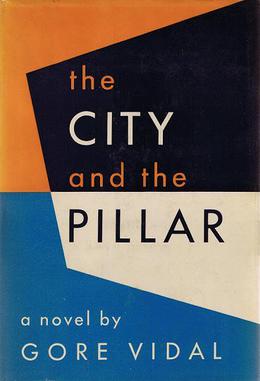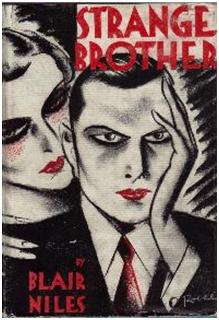
Eroticism is a quality that causes sexual feelings, as well as a philosophical contemplation concerning the aesthetics of sexual desire, sensuality, and romantic love. That quality may be found in any form of artwork, including painting, sculpture, photography, drama, film, music, or literature. It may also be found in advertising. The term may also refer to a state of sexual arousal or anticipation of such – an insistent sexual impulse, desire, or pattern of thoughts.

Sir Edmund William Gosse was an English poet, author and critic. He was strictly brought up in a small Protestant sect, the Plymouth Brethren, but broke away sharply from that faith. His account of his childhood in the book Father and Son has been described as the first psychological biography.

Prince Albert Victor, Duke of Clarence and Avondale was the eldest child of the Prince and Princess of Wales. From the time of his birth, he was second in the line of succession to the British throne, but did not become king or prince of Wales because he died before both his grandmother Queen Victoria and his father.

Fin de siècle is a French term meaning "end of century,” a phrase which typically encompasses both the meaning of the similar English idiom "turn of the century" and also makes reference to the closing of one era and onset of another. Without context, the term is typically used to refer to the end of the 19th century. This period was widely thought to be a period of social degeneracy, but at the same time a period of hope for a new beginning. The "spirit" of fin de siècle often refers to the cultural hallmarks that were recognized as prominent in the 1880s and 1890s, including ennui, cynicism, pessimism, and "a widespread belief that civilization leads to decadence."

She, subtitled A History of Adventure, is a novel by the English writer Sir H. Rider Haggard, published in book form in 1887 following serialisation in The Graphic magazine between October 1886 and January 1887. She was extraordinarily popular upon its release and has never been out of print.

The City and the Pillar is the third published novel by American writer Gore Vidal, written in 1946 and published on January 10, 1948. The story is about a young man who is coming of age and discovers his own homosexuality.

Shakuntala Devi was an Indian mental calculator, astrologer, and writer, popularly known as the "Human Computer". Her talent earned her a place in the 1982 edition of The Guinness Book of World Records. However, the certificate for the record was given posthumously on 30 July 2020, despite Devi achieving her world record on 18 June 1980 at Imperial College, London. Devi was a precocious child and she demonstrated her arithmetic abilities at the University of Mysore without any formal education.

The Woodlanders is a novel by Thomas Hardy. The novel is set between 1856 and 1858. It was serialised from 15 May 1886 to 9 April 1887 in Macmillan's Magazine and published in three volumes in 1887. It is one of his series of Wessex novels.

Amy Judith Levy was an English essayist, poet, and novelist best remembered for her literary gifts; her experience as the second Jewish woman at Cambridge University, and as the first Jewish student at Newnham College, Cambridge; her feminist positions; her friendships with others living what came later to be called a "New Woman" life, some of whom were lesbians; and her relationships with both women and men in literary and politically activist circles in London during the 1880s.

Lucas Malet was the pseudonym of Mary St Leger Kingsley, a Victorian novelist. Of her novels, The Wages of Sin (1891) and The History of Sir Richard Calmady (1901) were especially popular. Malet scholar Talia Schaffer notes that she was "widely regarded as one of the premier writers of fiction in the English-speaking world" at the height of her career, but her reputation declined by the end of her life and today she is rarely read or studied. At the height of her popularity she was "compared favorably to Thomas Hardy, and Henry James, with sales rivaling Rudyard Kipling." Malet's fin de siecle novels offer "detailed, sensitive investigations of the psychology of masochism, perverse desires, unconventional gender roles, and the body."

Gay literature is a collective term for literature produced by or for the gay community which involves characters, plot lines, and/or themes portraying male homosexual behavior.

Marc-André Raffalovich was a French poet and writer on homosexuality, best known today for his patronage of the arts and for his lifelong relationship with the English poet John Gray.

Strange Brother is a gay novel written by Blair Niles published in 1931. The story is about a platonic relationship between a heterosexual woman and a gay man and takes place in New York City in the late 1920s and early 1930s.
Alison Hennegan is a lecturer at the University of Cambridge and a Fellow of Trinity Hall. She is also a prominent campaigner for gay and lesbian rights in the UK and a journalist.

Pederasty or paederasty is a sexual relationship between an adult man and a boy. It was a socially acknowledged practice in Ancient Greece and Rome and elsewhere in the world, such as Pre-Meiji Japan.
The Sins of the Cities of the Plain; or, The Recollections of a Mary-Ann, with Short Essays on Sodomy and Tribadism, by the pseudonymous "Jack Saul", is one of the first exclusively homosexual works of pornographic literature published in English. The book was first published in 1881 by William Lazenby, who printed 250 copies. A second edition was published by Leonard Smithers in 1902. It sold for an expensive four guineas.

Alan Dale was an influential British theatre critic, playwright and book author of the late Victorian and early 20th Century eras. He was born Alfred J. Cohen in Birmingham England. He arrived in New York in 1887 and became a drama critic for several New York papers i.e., New York Evening World, New York Journal and the New York American. His reviews of plays were often negative but helped sell a lot of William Randolph Hearst's newspapers. The theatre world despised Dale for his acid reviews.
John Saul, also known as Jack Saul, and Dublin Jack, was an Irish prostitute. He featured in two major homosexual scandals, and as a character in two works of pornographic literature of the period. Considered "notorious in Dublin and London" and "made infamous by the sensational testimony he gave in the Cleveland Street scandal", which was published in newspapers around the world, he has recently been the subject of scholarly analysis and speculation. One reason is the paucity of information on the lives and outlook of individual male prostitutes of the period. Saul has also come to be seen by some as a defiant individual in a society that sought to repress him: "a figure of abjection who refuses his status".

Victorian erotica is a genre of sexual art and literature which emerged in the Victorian era of 19th-century Britain. Victorian erotica emerged as a product of a Victorian sexual culture. The Victorian era was characterized by paradox of rigid morality and anti-sensualism, but also by an obsession with sex. Sex was a main social topic, with progressive and enlightened thought pushing for sexual restriction and repression. Overpopulation was a societal concern for the Victorians, thought to be the cause of famine, disease, and war. To curb the threats of overpopulation and to solve other social issues that were arising at the time, sex was socially regulated and controlled. New sexual categories emerged as a response, defining normal and abnormal sex. Heterosexual sex between married couples became the only form of sex socially and morally permissible. Sexual pleasure and desire beyond heterosexual marriage was labelled as deviant, considered to be sinful and sinister. Such deviant forms included masturbation, homosexuality, prostitution and pornography. Procreation was the primary goal of sex, removing it from the public, and placing it in the domestic. Yet, Victorian anti-sexual attitudes were contradictory of genuine Victorian life, with sex underlying much of the cultural practice. Sex was simultaneously repressed and proliferated. Sex was featured in medical manuals such as The Sexual Impulse by Havelock Ellis and Functions and Disorders of Reproductive Organs by William Acton, and in cultural magazines like The Penny Magazine and The Rambler. Sex was popular in entertainment, with much of Victorian theatre, art and literature including and expressing sexual and sensual themes.














